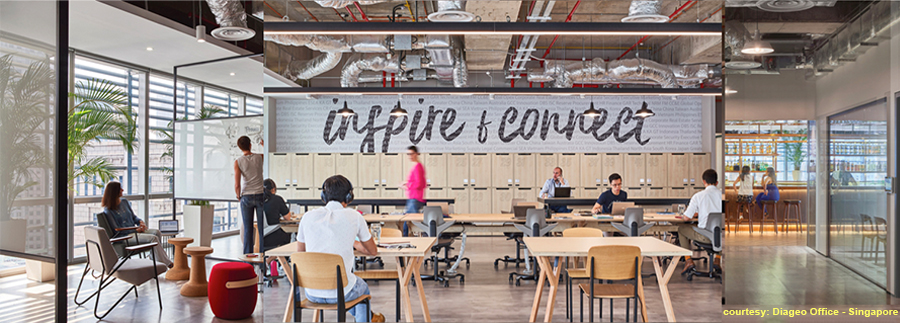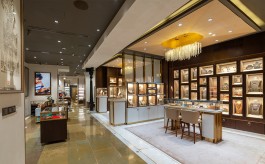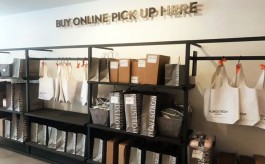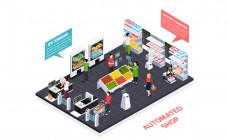Design & the culture of growth
By Retail4Growth Team | January 17, 2020
Vishal Kapoor takes us through some interesting perspectives on how design, culture, mindset, lifestyle and other aspects intersect to redefine outcomes and enable growth in the context of an experience driven economy.

Culture - a derivation of the Latin word ‘colere’, a word that connotes ‘nurture’, which in itself signifies growth and change. In it, is an amalgamation of various aspects including tacit wisdom, knowledge, art, beliefs, etc. These rituals eventually become our way of life, making us a part of a larger group of similar belief systems, which we call communities. Each of these rituals has a certain way of thought, planning and execution with a purpose.
 A similar scenario is reflected when we define an organization. An organization is a social unit of people that is designed and managed to meet a need or pursue collective goals – a definition in the dictionary. Now this group of people coming together for a common goal with different behavioural, social, ideological and economic backgrounds would need to be integrated into a common notion of forward movement. This collective harmonious gravitation towards growth is what I would call Designed Systems.
A similar scenario is reflected when we define an organization. An organization is a social unit of people that is designed and managed to meet a need or pursue collective goals – a definition in the dictionary. Now this group of people coming together for a common goal with different behavioural, social, ideological and economic backgrounds would need to be integrated into a common notion of forward movement. This collective harmonious gravitation towards growth is what I would call Designed Systems.
So, to begin with ‘organizations’ are possibly one of the first examples of formal design outcome. By design, I mean not just the way it looks, but more importantly, the way it works and how one differs from the other. Some organizations are bureaucratic and hierarchy driven, while some are nimble, a few others are chaotic and still, others strive for military-like precision. I am not in a position of judgement to state which is good or bad, as each of them would need something best suited to their context.
This context is where the word culture, both in the organizations’ performing markets as well as within their internal systems, would need to be aligned seamlessly. This alignment of context is my notion of Culture Design In fact it wouldn’t be wrong to say that design designs culture.
Design coming full circle
When we design, it generates a reaction; the repetitive reaction can be coded as behavior and these behaviors, in turn, shape our collective experiences through culture. We all agree the design is omnipresent: the products we consume, the space we live in, our mobility; everything is designed and these designed outcomes influence our habits, our habits, in turn, influence our behavior, our behavior becomes our way of life which in turn becomes our cultural showcase. Thus, the design comes a full circle.
Design in everyday life & cultural outcome
As an example of design coming a full circle, the advent of push-button mobile phones to today’s smartphones has tethered us to a new kind of obsession; literally stimulating our physical (the synchronized body language of bent upper neck and constantly moving fingertips) and psychological sensibilities (distances contradict: what’s near is ignored and it moves further away and what’s far is believed to be near), making this technology almost a kind of physical and emotional exoskeleton and eventually creating a new way of our reaction to the environment around us. This is the power of design created culture which will mutate into a new design need! Separate lanes for mobile users on pathways in China or an integrated traffic signal on the floor of footpath on street crossing in Netherland to avoid accidents of immersed mobile users are some extended design examples.
Also, in today’s markets, the speed of this cyclic movement of creation, operation and destruction has been more rapid than ever before. Multiple organizations get created and within no time either have to refresh or perish. With the advent of technology and empowered consumers, the power equation has shifted from the hands of a producer to a consumer. The traditional models of organization design, processes and behavior are all getting refreshed to stay contextual to the changing consumer.
What’s with Design Attitude?
The role of designers though still lies majorly in the skill periphery of organisations’ need, in some cases thankfully it has managed to evolve to the thinking and strategic platform. This is where design can become very potent, as it brings naturally with it an aspect of fluidity and comfort with chaos while being non-compromising on user-centricity, which all business is striving for.
The design attitude which is so refreshingly different from the business attitude is more attuned to touching the emotional chord with their outcome while being collaborative and visual in the process of transformation. The design attitude, which psychologically works in a fragmented yet interconnected formation, links various dots of various constituent disciplines while solving a specific problem or exploring possible future problems, which could also be termed as opportunities and hence growth.
Another aspect of designers is their capability to think with hands, something which in traditional management hierarchies is only limited to monotonous power points and modulated data. This approach of design brings in a sense of action while thinking and thereby a whole lot of honesty and transparency in the process.
Yet another difference which makes design thinking a value-add is the approach to immediately move into a solution-driven mind-set, rather than revolving and over-analyzing the problem itself. This solution mindset through envisioning of new ‘what if’ scenarios brings in multiple possibilities early on in the journey.
Finally, the Design mind naturally works towards resolution with empathy rather than increase tensions in the environment. Design is inherently different due to its rather prized feminine characteristics of empathy, emotion, compassion, adjustment, collaboration etc. which are inherently different from the traditional management traits displaying masculine aggression laced with a vocabulary that includes words like ‘targets, ‘killing the competition’, ‘annihilate’, ‘control’, ‘discipline’, ‘order’ etc. With the ever-changing chaotic external world, I believe design attitude is more holistically receptive to the ever-growing collaborative economy of pro-sumers with a consumer’s directly influencing producer.
In this changing economy from industrial to service-driven experience economy where product is hygiene, design attitude would be looked upon as a key trait and creative leadership which balances the left and right brain as a necessity for growth.
Vishal Kapoor is the Chief Design Officer (group) & Concept Business Head - Future Group.
Related Viewpoints
Chanda P Kumar
Chanda P Kumar, Associate Director- Marketing & Communications, Strategy , FRDC
Adding the right sparkle in jewellery store design









Comments